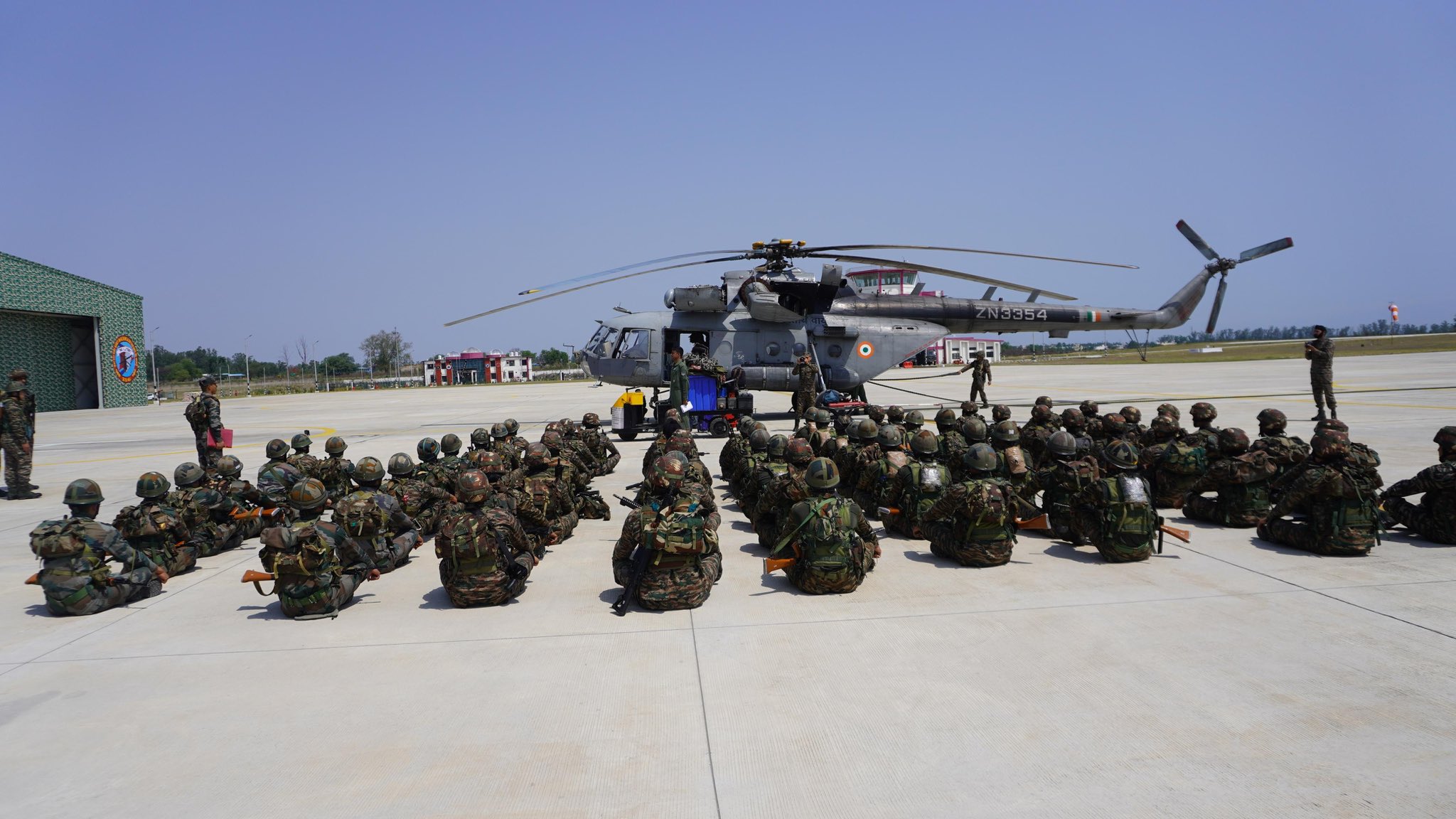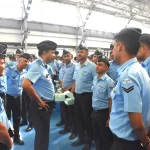The Indian Army’s Panther Division, part of the Vajra Corps (XI Corps), teamed up with the Indian Air Force (IAF) to conduct a high-intensity Special Heliborne Operations (SHBO) exercise, focusing on refining drills and procedures for seamless air-land coordination. The operation featured soldiers equipped for battle alongside a Mil Mi-17 helicopter, showcasing rapid troop deployment and tactical precision.
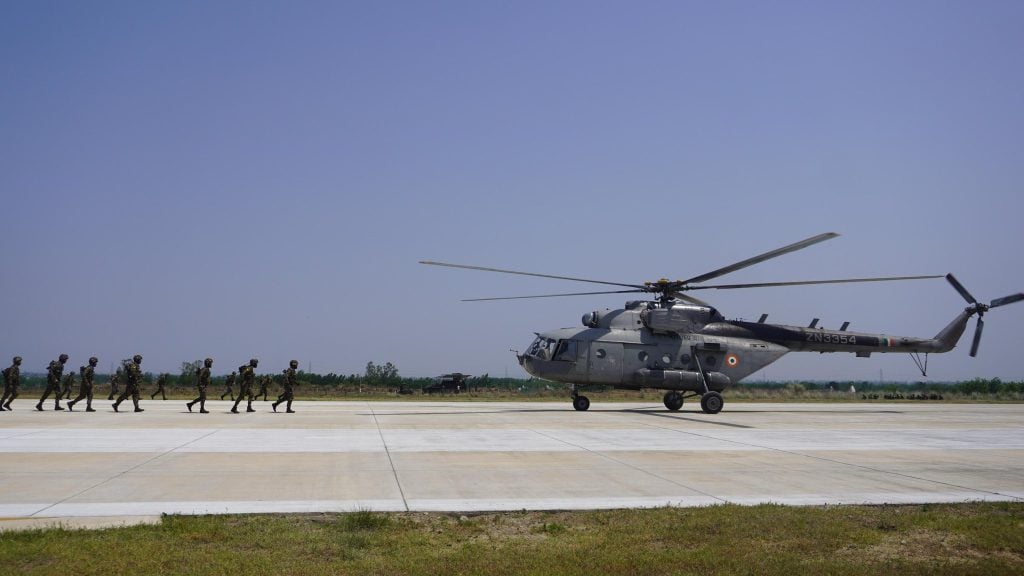
The exercise took place at an airbase under clear skies, with soldiers from the Panther Division assembling on the tarmac, preparing for deployment, and practicing rappelling techniques from the hovering Mi-17 helicopter. This operation highlights the Indian military’s commitment to enhancing jointmanship, a key element in modern warfare, emphasizing the importance of integrated operations among the Army, Air Force, and Navy to secure India’s borders and execute effective tactical maneuvers.
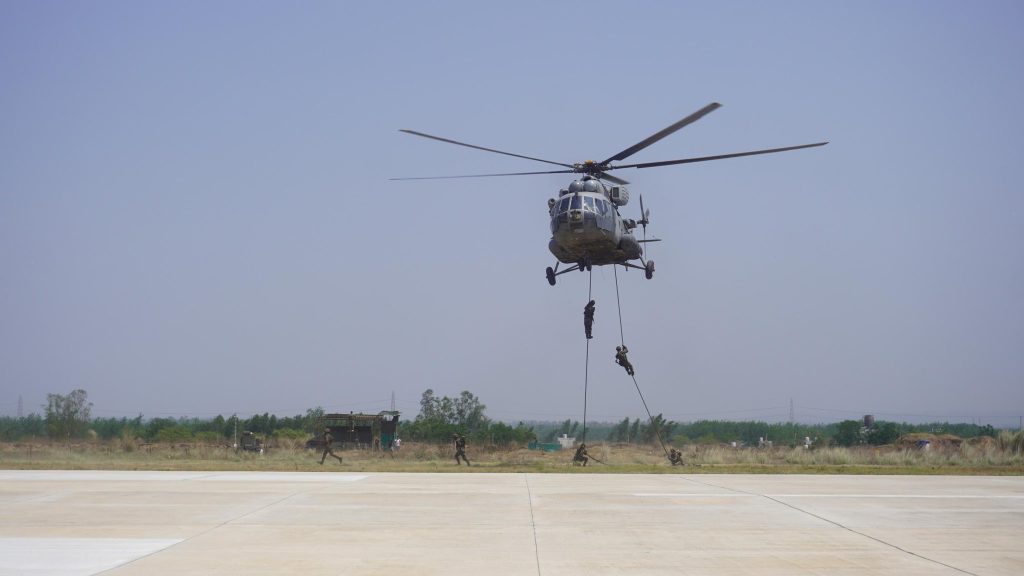
Vajra Corps, headquartered in Jalandhar under the Western Command, has a long history of defending India’s western frontier since its formation after 1947 to counter threats from Pakistan. The Corps played a significant role in the 1971 Indo-Pak War, where coordinated air-ground operations drastically reduced casualties, supported by over 7,000 IAF sorties (Indian Air Force records). Lessons from past conflicts, such as the 1999 Kargil War’s Operation Safed Sagar—where Mi-17 helicopters were adapted for high-altitude combat after the Mi-35 proved ineffective—continue to inform such exercises.
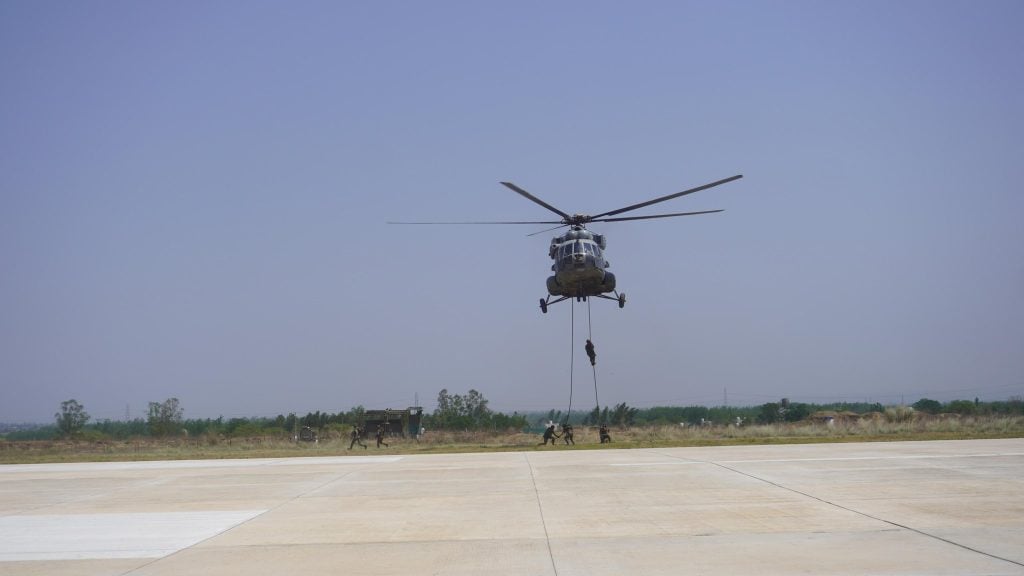
The Mi-17 helicopter, a Soviet-designed mainstay in the IAF’s fleet since 1975, remains a vital asset for such operations. Known for its reliability in challenging terrains like Kargil and Sikkim, the Mi-17 excels in troop transport and combat support, despite occasional setbacks like the 2017 Arunachal Pradesh crash, where a friendly fire incident involving a SPYDER missile claimed seven lives.
This joint exercise builds on recent drills, including a Tri-Services helocasting and underwater diving exercise in Sikkim on September 1, 2024, reflecting the armed forces’ dedication to unified operations. As India advances toward theaterisation, such exercises ensure its forces remain mission-ready, capable of executing complex air-land maneuvers with precision and efficiency.
With the IAF and Army continuing to modernize—drawing on post-Kargil advancements like the Sukhoi Su-30MKI—this operation reaffirms India’s focus on integrated defence strategies to safeguard its sovereignty and maintain operational readiness along its frontiers.

